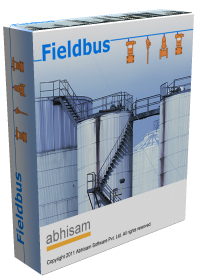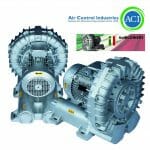Fieldbus is a modern automation architecture that is increasingly being adopted in a broad spectrum of industries, including oil and gas, chemicals, petrochemicals, pharmaceuticals, food and beverage, mining, metals processing, pulp and paper and power generation. The adoption of Fieldbus technology has been accelerating recently. User industries are now realizing the benefits of adopting Fieldbus technology in their plants in order to have better control over their processes, achieve higher productivity and increase safety and profitability.
Until now, there have been very few resources avail-able to educate people in understanding and using Fieldbus technology. Classroom courses are rare, and sending people to far away locations is no longer cost effective in today’s austere corporate environment.
This e-learning program can be completed anywhere in the world, offering participants total flexibility. The program is self-paced, allowing participants to complete it as quickly or slowly as they wish.
What’s more-unlike a classroom training course that will fade away from memory after some time, this e-learning course is available to you on your PC or laptop 24 X 7. The course incorporates a blend of text, interactive animations, videos and simulations using real-life examples from industry to give the course a practical edge. The course consists of FIVE modules. Starting from Basic Concepts (that covers topics such as Analog and Digital Signals, Control System architectures, various Fieldbus protocols and the OSI Models), it goes on to cover FOUNDATION Fieldbus in great detail. It also covers other popular industry Fieldbus systems, such as HART, Profibus PA and ASi. It then covers the use of Fieldbus technology in hazardous areas. The final module is a Case Study of a Fieldbus project that enables the learner to apply the knowledge gained within a practical application.
The program is sophisticated and interactive, making substantial use of multimedia elements, such as Flash animations, simulations and videos, to promote understanding. It also includes a Self- Assessment test that enables learners to know the level of their own knowledge.
If you wish to deliver this course to a large number of people (like for examples your employees or colleagues), then you can even opt for our hosted version. In this version nobody has to download anything at all, simply login to our Learning Management System over the internet and take the course! We will provide all compliance info including learner login times and scores, for your training records. And if you wish to use your own SCORM compliant Learning Management System (LMS), then we can even stream it to your LMS from our server, so that you can fully integrate the course within your other LMS courses, track scores, monitor training hours and assess your learners.
This is what the course covers.
Module 1 – Basic Concepts
- Introduction
- Process Control Systems
- Single Loop Controller architecture
- Process Control Systems with Single Loop Controllers
- Traditional Controls-1
- Traditional Controls-2
- DDC to DCS
- DCS
- Automation Hierarchy
- Fieldbus
- Ethernet based buses
- Point to Point Architecture-1
- Point to Point Architecture-2
- Traditional DCS architecture-1
- Traditional DCS architecture-2
- Multi Drop architecture
- PLC based architecture
- Signals & their types
- Types of Signals
- Digital & Analog Signals
- Digital Signals -1
- Digital Signals -2
- Digital Signals -3
- Digital Signals -4
- Clock
- Manchester Encoding
- Field Devices
- Fieldbus Devices
- Analog Network
- Digital Network
- Combination Network
- Topologies -1
- Topologies -2
- Addressing
- Types of Bus networks -1
- Types of Bus networks -2
- Fieldbus Standards -1
- Fieldbus Standards -2
- Current Standards
- Interoperability
- FOUNDATION Fieldbus
- HART
- Profibus
- ASi
- Fieldbus advantages -1
- Fieldbus advantages -2
- Fieldbus advantages -2
- The OSI model
- Using OSI for communication
- Fieldbus OSI Model
Module 2 – Foundation Fieldbus
- Introduction
- The Fieldbus Foundation
- Physical Layer
- H1 network
- H1 characteristics -1
- H1 characteristics -2
- H1 Segment -1
- H1 Segment -2
- Fieldbus Hardware & Terminology
- H1, H2 & HSE
- Topologies
- Daisy Chain
- Multidrop
- Chicken Foot Topology
- More on Topologies
- Linking Devices
- Handheld Communicators
- Host Communication
- Transmission & Reception
- FF Power supplies -1
- FF Power supplies -2
- FF Power supplies – Isolation
- FF 831
- Power Supply Sizing
- Redundant Power Supply
- Signal Characteristics -1
- Signal Characteristics -2
- Bricks & Couplers -1
- Bricks & Couplers -2
- Device Couplers
- Terminators -1
- Terminators -2
- Cable lengths
- Cable types
- Devices per spur
- Number of devices per segment
- H1 addressing -1
- H1 addressing -2
- DATA link layer
- Communication issues -1
- Communication issues -2
- Communication issues -3
- Communication issues -4
- Cyclic & Acyclic Communication
- Link Master
- Data Buffers
- Scheduled Communication
- Unscheduled Communication
- LAS Function
- Backup LAS
- Live list
- Time Synchronization
- User Layer
- Fieldbus Blocks
- Types of Blocks
- What are function blocks?
- Control in Field -1
- Control in Field -2
- Control in Field -3
- Typical loops using Function Blocks
- Typical loops using Function Blocks
- Representation of the FIC loop
- FIC loop implementation-1
- FIC loop implementation-2
- Location of Function Blocks -1
- Location of Function Blocks -2
- Location of Function Blocks -3
- Types of Function Blocks
- Typical Blocks in a PT
- Flexible Function Blocks
- Block status & modes
- Multiple measurements & blocks
- Multiple measurements & blocks
- Cascade Control Blocks
- Cascade control configuration
- Input Select Function
- Input Select Function
- Macrocycles-1
- Macrocycles-2
- Macrocycles-3
- Macrocycles-4
- Macrocycle optimization-1
- Macrocycle optimization-2
- Macrocycle optimization-3
- What are VCRs?
- More about VCRs
- VCR Limits
- More Function Blocks
- Fieldbus Interoperability
- Device Tests
- HIST
- Host Profiles
- Safety Instrumented Functions
- Traditional approach
- Advantages of FF SIF
- Disadvantages of FF SIF
- Black Channel
- White Channel
Module 3 – HART, Profibus & ASi
- Introduction
- HART
- HART Introduction
- Master Slave network
- Principle of operation -1
- Principle of operation -2
- FSK
- HART Communicator
- HART PC Configurator
- HART Versions
- HART 7 features
- PSK
- Point to Point Network
- Multi Drop mode
- Scan times
- HART Commands
- HART Hybrid Loop
- HART Signals
- DD files
- Multiple process variables
- Profibus
- History
- Fieldbus philosophy
- Profibus DP
- Profibus PA
- Profinet & other profiles
- Similarities with FF
- Differences with FF
- Architecture -1
- Architecture -2
- Segment couplers -1
- Segment couplers -2
- Number of devices
- Standards
- OSI Model & Profibus
- Profibus PA blocks
- Control in field?
- ASICs
- GSD files
- FDT
- Asset Management
- ASi bus
- Why Asi bus?
- ASi Bus characteristics -1
- ASi Bus characteristics -2
- ASi Bus characteristics -3
- ASi Bus characteristics -4
- ASi Bus Topologies
- ASi Bus Topologies
- ASi Cable
- ASi Masters
- ASi ASIC
- ASi Slaves
- ASi addressing -1
- ASi addressing -2
- ASi Certification
- ASi Power Supplies
- Safety at work -1
- Safety at work -2
- Safety Monitor Working -1
- Safety Monitor Working -2
- PLC Safety Monitor
- ASi Installation -1
- ASi Installation -2
- ASi Installation -3
- ASi Installation -4
MODULE 4 – Fieldbus in hazardous areas
- Using traditional explosionproof methods
- Fieldbus using Intrinsic safety -1
- Fieldbus using Intrinsic safety -2
- Fieldbus using Intrinsic safety -3
- Fieldbus using Intrinsic safety -4
- Fieldbus using Intrinsic safety -5
- Fieldbus using Intrinsic safety -6
- Fieldbus using Intrinsic safety -7
- Fieldbus Entity Calculation Example
- FISCO
- FISCO Topology
- FISCO Conditions
- FISCO Advantages
- FNICO
- FNICO with repeaters
- FNICO & Ex-ic
- Field Barriers & High Energy Trunks
MODULE 5 – Case Study of a Fieldbus Project
- The Project
- The plant & process
- The P & ID
- Fieldbus Architecture
- Engineering for Fieldbus-1
- Engineering for Fieldbus-2
- The new P & ID
- Segment Allocation -1
- Segment Allocation -2
- Segment Allocation -3
- Fieldbus Hardware
- Instruments
- Junction Boxes & Wiring Blocks
- Power Supply
- Cable
- Max Cable Length
- Terminators
- Fieldbus Software – 1
- Fieldbus Software – 2
- Installation – 1
- Installation – 2
- Format for checking
- Configuration -1
- Configuration -2
- Commissioning
- Trouble Shooting – 1
- Trouble Shooting – 2
- Completion of project
Self-Assessment Test
You have seen how comprehensive and complete the course is. Please contact us at [email protected] for more details or visit us online at https://www.abhisam.com/fieldbustraining.html
For organizations and companies, we have a Cloud version that runs on our own Learning Management System (LMS).









Leave a Reply